Circulation: 9,500; three issues a year since 1998 Download at www.oelcheck.de/news-downloads
CONTENTS
New service – free returns of oil samples .................................................p. 3

Better safety – for gas engines and chlorine gas compressors ..................p. 3
Less is more – loss of engine oils due to evaporation................................p. 3

Hot topics:






The elements of a lubricant check II

– Wear, contaminants or additives

– Gear and industrial oils and their typical limit values .........................pp. 4-5


News from China – Pirelli, millions of tyres made in China ........................p. 6









Forming the Future – Schuler leads in forming technology ........................p. 7

Q & A – Engine oils, oil consumption or oil loss? .......................................p. 8
Hansa-Flex – Over 300,000 Customers Always Close By













Hardly any commercial operations would work without fluid technology. Without it, many power, signal and energy transmission facilities would not be able to operate. Hansa-Flex knows that the customer‘s machines, facilities and systems must work safely, reliably, and around the clock. Availability counts, and downtime costs money. Absolute reliability, customer proximity and expert knowledge is critical. The services offered by the company are diverse and complex. Fluid service and monitoring of hydraulic liquids play a special role.
Started in 1962 as a supplier of replacement parts for hydraulic hose lines, today Hansa-Flex is Europe‘s leading supplier of fluid technology systems and a value-adding partner for high-performing companies of all sizes. Over 300,000 customers value the wide range of products and excellent service offered by the German company.









Hydraulic fluids handle a whole range of tasks. They transfer forces, perform control functions, lubricate moving parts, protect against wear and corrosion, provide cooling, dampen vibrations and remove possible contaminants. But the performance of modern hydraulic systems is increasing, and the systems themselves are getting smaller. The increase in operating pressures is made possible not only thanks to optimised pump technology, but also through decreased gap tolerances, better surface finishes and a more fine-tuned valve technology, letting components work even more ef fi ciently and precisely. Lower tank volumes do make modern equipment more compact, but they also increase circulation rates. This means fluids must be regarded with a signi fi cantly more critical eye than before.

SPRING 2015
„Who is the most reliable supplier of services in the fluid technology sector?“ This question was recently asked during a large customer survey by one of the most well known manufacturers of hydraulics components. And as expected, most of those asked voted for Hansa-Flex.
Specialised Hansa-Flex assembly teams and the quick hydraulic service Flexxpress are always on call with fully equipped service vehicles.
The oil and gas multinational company Royal Dutch Shell buys the BG Group, which is active in the gas business, from Great Britain for €60 million. China‘s largest chemical company, the China National Chemical Corporation (ChemChina) is well on the way to taking over at least 65 percent of the shares of Pirelli. This and other multi-million dollar deals are commonplace today. International integration is making progress - and OELCHECK is in contact with many of the companies on multiple levels at once. It is important to know the relationships and contexts, and always adapt to changing circumstances and take them into consideration in our own communication systems. Not an easy task with 20,000 customers! But the fact that OELCHECK is well organised and has clear structures puts us in good stead. As a company which has been family owned since it was founded, we can adapt quickly and fl exibly to new situations and demands thanks to short decision paths.
as for clari fi cation of problematic cases. Another important area is that of preventative examinations, which are used to analyse trends in order to create a ‚patient file‘. This concerns lubricant analyses which are performed at regular intervals and can be used in relation to previous analyses to observe and comment on changes. They do not just indicate when the oil needs changing, but also discover wear and any imminent damage, thereby optimising maintenance costs.
OELCHECK offers various bespoke analysis sets for examining hydraulic fluids. Our analysis set 2 contains a range of tests that are usually suf fi cient for routine monitoring of small to medium systems. This includes monitoring wear metals, additives, possible contaminants and the current state of the oil. A count of the particles is also given according to ISO 4406 and SAE 4059 which provides information on the degree of contamination. For systems with a large oil volume and for circulating oils, analysis set 5 is the first choice. This set additionally includes a very close look at the aging process of the oil in the OELCHECK laboratory. Special sets are also available for biodegradable and fire resistant fluids.
encompasses all sectors OELCH
This is appreciated by our customers from all sectors who make use of OELCHECK lubricant analyses and many of the other services we offer. Alongside this, almost all well-known lubricant manufacturers operate dedicated laboratories where they examine their own products for customers, sometimes even for free. However, this is not one of their main services. By contrast, OELCHECK is the absolute specialist. As a medium-sized company, we are active in the same sector as the world‘s largest mineral oil companies. They acknowledge our achievements and expertise. Many of them regularly swap ideas with us or make use of the services we offer. Our complete independence is a crucial factor in this respect. Our network is international and encompasses all sectors - yet OELCHECK is not closely intertwined with any other companies.
Yours, Barbara Weismann

Hansa-Flex Fluid Service and Sensor Technology

For continuous monitoring of the hydraulic fluids, Hansa-Flex focusses on the latest sensor technology. Special sensors and test devices are an integral part of the product range. These allow the oil level, temperature, pressure and possible exposure to water to be checked. Probably the greatest danger for hydraulic systems is the fluid becoming contaminated. Almost 75 percent of unplanned downtime and wear-related problems are caused by contaminated hydraulic oil. With good reason, Hansa-Flex therefore recommends installing inline particle sensors for continuous monitoring of even dif fi cult to reach measuring points. In addition, a particle counting device allows purity classes according to ISO and SAE to be measured on the spot.
OELCHECK Analyses – the perfect addition


Sensors and quick analysis devices are a sensible way to expand condition monitoring, especially for large systems. Sudden problems are identi fi ed quickly, most notably thanks to continuous monitoring of the trend‘s course. But what should be done if the sensor gives an alarm signal? Is the sensor correctly validated? Were the system and the lubricant in proper working order beforehand? These questions can often not be answered in detail based on a single value from the sensor. This is
where the advantages of oil analysis in a laboratory become apparent. A classic laboratory analysis combines a range of single values and evaluates them in all of their complexity. The current results of laboratory analysis in combination with the sensor results allow the best of both worlds to be united as events unfold.
For this reason, Hansa-Flex also uses lubricant analyses from OELCHECK in a targeted manner to check and assess the quality of fresh oils, as well
Hansa-Flex‘s principle for success is called „system partnership“. It is the breadth and depth of the products and services which make the company a valued partner today.
www.hansa-


















2
fl ex.com
Hansa-Flex is Europe‘s leading supplier of fluid technology systems and is always close to its customers, wherever they may be.
Easy return-service for lubricant samples
Starting immediately, all OELCHECK analysis kits delivered in Germany will receive return orders from our logistics partner UPS. This allows you to send your lubricant samples to the OELCHECK laboratory in Brannenburg with minimum effort and without additional costs, provided that the pick-up address is in Germany.
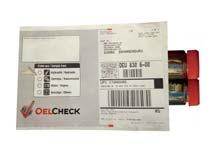

We receive up to 1,800 samples of lubricant daily. We were therefore able to come to an agreement with our logistics partner UPS so that our custom-

ers in Germany are able to send the samples free of charge.
Processing them is quite simple. Each of our analysis sets contains an information fl yer about how it works. Simply stick the UPS return label onto the front of the OELCHECK shipping envelope, or onto the shipping box if sending multiple samples. You then register the shipment with UPS via telephone or online. You can of course also drop off the samples at one of the 2,200 UPS pick-up points. The general turnaround time is one working day. The UPS tracking numbers will give you information about the current status of the shipment.
OELCHECK customers abroad also bene fi t from the new return-service with UPS. Customers worldwide can send all lubricant samples inexpensively to Brannenburg for easy processing. Samples from the EU usually only need one day, international samples generally have a turnaround of three working days. The moderate costs for this service can be integrated into the price of the OELCHECK analysis kits. Please contact us for an offer to suit your needs.
akv@oelcheck.de, Tel. +49 8034-9047-250
Better safety for gas engines and chlorine gas compressors –keeping track of chlorine with a new ICP device
Starting immediately and without extra charges, OELCHECK reveals the total chlorine content during examinations of gas engine oils and compressors. Other gases such as sewage gas, biogas or process gases in the chemical industry, unlike natural gas or liquid gas, can contain chlorine or silicon impurities. If these contaminants get into the oil via fuel or compression gases, the chlorine can cause corrosive wear, or the silicon abrasive wear.
The OELCHECK lab report will show the subsequently increased wear values. In order to explain their cause, silicon has always been checked as standard in the OELCHECK laboratory. But we now





measure the total chlorine content. With the help of the optimised OELCHECK analyses for gas engines and compressors, we will provide you with comprehensive information on the causes of possible engine damage so that you can take countermeasures quickly. Whilst the silicon content has always been measured, the chlorine content could only be determined in exceptional cases using expensive and complex processes. In addition to the three devices used to determine elements so far, at the end of 2014 we installed a latest generation ICP device in our laboratory. An expensive, but accurate investment. The new ICP device measures the concentration of more than 30 elements and simultaneously detects the total chlorine content with precision using its specially designed optics and CCD chip.
Whilst the total chlorine value does not allow dangerous water-soluble chlorides, which primarily present the risk of corrosion, to be distinguished from innocuous chlorine compounds, by observing
the trend, it is easy to determine whether the chlorine content has changed dangerously. Although the risk potential of chlorine is known, gas engine and oil manufacturers have so far not set a limit value for chlorine. Based on our experience, we decided to quote the total chlorine content in the lab report if the value exceeds 30 mg/kg. For extremely high values above 800 mg/kg, we will point out possible problems which could occur in connection with chlorides. At the same time, we will also give particular feedback on the values for wear metals (such as iron, copper, aluminium, lead and tin) in connection with altered acid values (AN, BN, i-pH) with regard to corrosion-induced changes. For turbo compressors which are operated as chlorine gas compressors, the possibility of chlorine entering the oil circulation cannot be ruled out. For the analysis of turbine oils used in compressors such as these, determining the chlorine content also offers clues about dangerous chlorine contamination.
Less is more – OELCHECK determines loss due to evaporation



More than half of all lubricants produced are for lubricating engines. During use, part of the engine oil is led over the crankcase ventilation system and burned along with the air-fuel mixture. Additionally, over 10 percent of the oil evaporates during higher oil sump temperatures and therefore cannot be recycled later on. The lower the loss of oil due to evaporation, the lower the oil consumption and the more stable its viscosity characteristics. With increasing viscosity, on the other hand, fuel consumption usually also increases. Moreover, lubricant components can form deposits in catalytic converters and diesel particulate filters.
Due to the tendency of lubricants to give off volatile constituents at high temperatures, loss due to
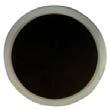
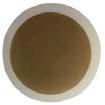







evaporation plays an important role in determining the burden on the environment in several ways. The low-viscosity 0W or 5W engine oils required today in view of reduced exhaust gas values can only be achieved using thinner, usually fully synthetic base oils. Since their short-chain molecules boil more easily, the OEM approvals and ACEA speci fi cations set a limit on the maximum permitted evaporation loss for engine oils: The loss due to evaporation of a new engine oil must therefore be indicated. This is also an indication of the engine oil‘s quality. The higher it is, the more oil is consumed. But loss due to evaporation is a deciding factor for many other lubricants too, such as high-temperature chain oils.

The loss due to evaporation can be determined using the Noack method in accordance with DIN
51581-1 or ASTM D5800. This determines the oil content in % which evaporates in 60 minutes from 65 grammes of oil at a temperature of 250°C. OELCHECK determines the same loss due to evaporation standardised in accordance with DIN 515812 using a gas chromatograph. In doing so, the oil is broken down into its constituent parts. The oil‘s components are separated in a separation column in order of increasing boiling temperature. After this, the percentage share of the components that evaporate at a temperature of 250°C is determined from the total quantity of all of the components.
3
OELCHECK INSIDER INFO
SPECTRO-ARCOS finds over 30 elements
The

Gear and industrial oils for

Wear
apply
Values above or below the warning values do not always mean that the oil should be changed. Elements marked with * appear in the standard lab report for gear oils only for values above 1 mg/kg (1 ppm.)
Elements in gear and industrial oils
In the Winter 2014 OELCHECKER (download at www.oelcheck.de), we took a close look at the additive, contaminant and wear elements in hydraulic oil samples. In this edition, we look in detail at the origin of these elements which can be found in gear oils and most industrial lubricants, as well as their typical warning values. The values are based on data from over 650,000 samples of used oil from
industrial gears of all types which were examined in the OELCHECK laboratory.
Of the 29 elements in the table, we state 18 in the lab report as standard, as well as any with values higher than 1 mg/kg. We also investigate unusual or dif fi cult-to-determine elements such as sulphur, lithium, chlorine or manganese. OELCHECK is the only laboratory to standardise its ICP and RDE devices with its own specially designed calibrating
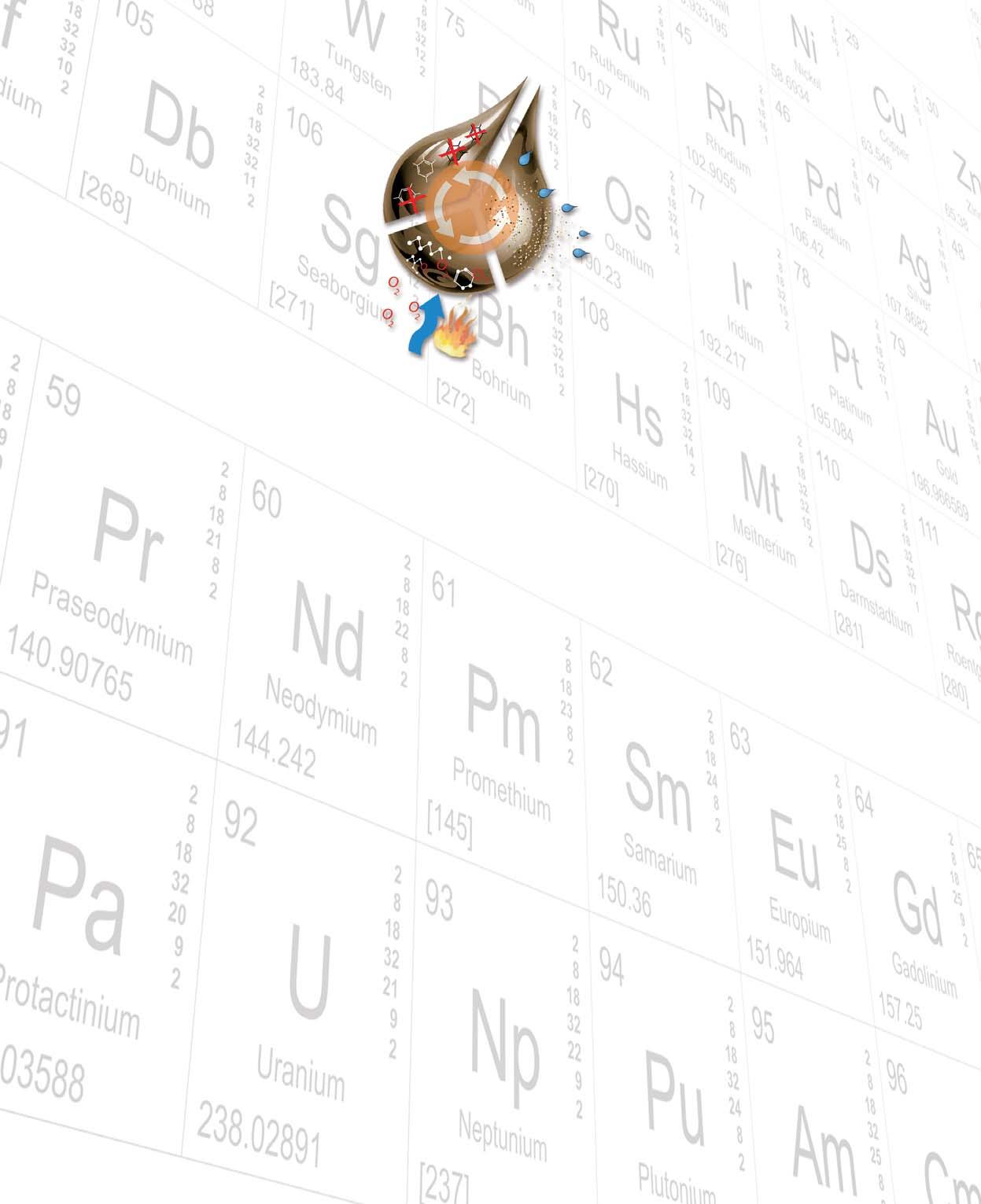
oils. However, some metals can only be determined precisely up to a concentration of 5,000 mg/kg.

Interpreting the values
The diagnostic engineer assesses the interplay of all of the values and also takes into account the customer‘s speci fi c operating conditions. The limit values and tolerances published here can therefore
Element Sign Warning value mostly in connection with Possible causes typical range mostly in connection with mobilestationary AluminiumAl 4520Si, Cu, MgWorm wheels (aluminium-bronze), clutches, oil pumps, pressure or aluminium cast parts, housings, aluminium sealing rings <50 SiAluminium Antimony*Sb <7<3Sn, Pb, CuHard lead, zinc alloys on bearings, white metal bearings, solder (soft solder) 2 No typical Barium Ba22 No typical wear element in gears <2000 P, ZnFriction-re industrial g Beryllium*Be33 Al, CuLightweight construction parts made from sintered metal, beryllium-copper alloy 2 No typical LeadPb2010 Cu, Zn, SbPlain bearing running surface, lead bronze, synchroniser rings, coats of paint <3 Reduces fr (previously BoronB1212 FeCeramic components, insulation bodies, brake and clutch linings <400 Friction-re Cadmium*Cd22 No typical wear element in gears 2 No typical ChromeCr2010 Fe, Ni, Mn, MoRoller bearings, alloy constituents of high-strength gearwheels, multiple disc clutches 2 No typical Chlorine*Cl22 No typical wear element in gears <30 Chlorinated lubricants IronFe490150 Cu, Ni, Cr, Mn, Mo Gearwheels, rolling bearings, oil pumps, steel lamina couplings, cast housings, shafts, radial serrations, planetary carriers 2 No typical PotassiumK22 No typical wear element in gears 2 No typical CalciumCa22 No typical wear element in gears <4000 P,S Detergent ( engine oils Cobalt*Co22 No typical wear element in gears 2 No typical CopperCu7540 Zn, Pb, CuBronze worm wheels, friction bearings, roller bearing cages, oil coolers, synchroniser rings, brass 2 No typical Lithium*Li22 No typical wear element in gears 2 No typical MagnesiumMg94 AlAluminium die-cast alloy <2000 Detergent ( engine oils ManganeseMn2020 Fe, Cr, Ni, CuRoller bearings, pumps, general high-alloyed steels 2 No typical MolybdenumMo148 Fe, Cr, NiConstituent of high-strength alloys e.g. for hardened gearwheels or roller bearing steel <2000 P,S,Ca,MgMolybdenu Sodium Na22 No typical wear element in gears <200 Non-ferrou NickelNi175 Constituents of high-strength alloys e.g. for hardened gear wheels or roller bearing steel, nickel-plated components 2 No typical PhosphorusP22 Phosphated (hardened) surfaces, generally covering with P as additive <2000 SWear and c SulphurS22 No typical wear element in gears up to 3% PAdditives to oils Silver*Ag44 Plain bearing, silver solder 2 No typical SiliconSi239 AlAluminium die-cast parts, e.g. housings <40 Anti-foamin Titanium*Ti33 FeAlloy constituent of high-strength steels 2 No typical Vanadium*V22 No typical wear element in gears 2 No typical Tungsten*W22 No typical wear element in gears 2 No typical ZincZn4178 CuRoller bearing cages, coolers, zinc-coated components (e.g. filter support cores), brass components <1500 Wear-reduc resistance TinSn2020 Plain bearing <2 No typical
contaminants,
„mobile“
„stationary“
from gears in stationary industrial systems.
warning values
to vehicle gears and to oil fillings from mobile systems. The
warning values refer to oils
– typical warning values additives and wear








Na, KCooling-grease and cooling-fluid supplement, fluxing agent for solder joints, detergent supplement, pesticide
3 Cu, Sn, VDye pigments, disc brake lubricant (cadmium poses a danger to health and has been banned in many applications in the EU since 2011)
d additives to protect against wear are only rarely used today as cooling <30 Fe, Na, KSeawater, table salt, chlorine gas, PCB, chlorinated refrigerants, supplement in some cutting fluids
2 Additive made from lubricant grease or assembly paste
additive components for gear oilNaGritting salt, synthetic fertiliser, from tap water, sea salt, salty air, coolant (glycol), metal working oil ( cleaning) and dispersent (for keeping in suspension) additives, UTTO, <15 Na, K, SiFrom hard (cooling) water, engine oils, mineral dust (e.g. dolomite), from hydraulic oils, calcium saponified greases
additive components for gear oil
2
Unusual as a contaminant
11 Fe, Pb, Al Abrasion of friction lining of multiple disc clutch or brakes, from plumping pipes, sealing rings, synchronising sealing rings, high temperature paste additive components for gear oil 20 Ca, Zn, PThickener of multipurpose grease, assembly paste ( cleaning) and dispersent (for keeping in suspension) additives, UTTO, <15 Ca, Zn, PBlending with engine oil, tap or waste water, also possible from hydraulic oils, or alloy component constituents

additive components for gear oil
corrosion protection

additive components for gear oil
additive components for gear oil
2
Unusual as a contaminant
Zn, Ca, PAssembly paste, grease, blending with engine oil
Al, Si, KGritting salt, synthetic fertiliser or tap water, sea salt, salty air, grease thickener, antifreeze (glycol)


Assembly paste containing nickel

Si, Ca, AlDust, synthetic fertiliser,
Unusual as a contaminant
19 AlDust or arenaceous quartz, glass dust, silicon oil, silicon grease or silicon spray, plastic release agent, silicon sealing compounds



<40
Used as a marker to prove the authenticity of the oil by the manufacturer
<10 NI,Al, BiConstituent in heavy oil, dye and occasionally in greases
<4 FeResidue from welding electrodes, TIG welding cing extreme pressure additive, reduces friction (friction modifier), to ageing
additive components for gear oil
additive components for gear oil
only serve as a general guide for a speci fi c usage case with a typical service life and oil fill volume.
Limit values for wear metals should be set lower:
the larger the oil quantity
the shorter the service life
for engines: the lower the engine speed;

for hydraulic systems: the higher the working pressure
<80 Fe, Cu, AlCoats of paint containing zinc, abrasion of sealing compounds, blending with oils containing zinc



<9
Soldering joints, coatings, as a constituent of ester oils
for gearboxes: the higher the circumferential speed
Additives and their changes should always be scrutinised critically, particularly if they hint at being mixed with an incompatible oil. If zinc is found in used oil which does not contain zinc as an additive in itself, its source must always be investigated.
Contaminants, their warning values apply independent of the service life, quantity of oil and loads. Any dust is always too much!
Our tip:
With one to two yearly lubricant analyses per unit, you not only get substantiated diagnoses from an experienced OELCHECK diagnostic engineer, but also make the course of any trends visible. This is a valuable tool, not only for discovering wear at an early stage.
55 AdditiveContaminant Possible causes Warning value mostly in connection with Possible causes silicate-based nanoparticle additive <20 SiDust from mines, e.g. bauxite additive components for gear oil <10 Li, CaContamination due to lubricating grease ducing additive (friction modifier) in automatic gear oils, unusual for gear oils <15 Contaminant due
additive components for gear oil 2 Unusual as a contaminant iction (friction modifier) used as a wear protector, no longer commonplace today) <3 Blending
ducing additive (friction modifier) <10
additive components for gear oil
additive components for gear oil 2 Unusual as
additive
to greases and pastes containing barium, blending with an ATF
with leaded grease, leaded paint coats
a contaminant
components for gear oil
additive
components for gear oil 2
m-organic
<15
s
oil <6
corrosion
<20
o protect against wear, in
2
additive
oil
additives, for gear oils with PD effect, MoS2
metal protection,
<24
additive components for gear
protection additive, extreme pressure additive
hypoid gear oils, constituent of mineral base
Unusual as a contaminant
components for gear
ng
additives, nanoparticles in combination with Al
Pirelli – millions of tyres made for China








Pirelli, one of the largest tyre manufacturers in the world is active in more than 160 countries and is of course also present in the growth market of China. In the Shandong province on the eastern coast of China near the city of Yanzhou, Pirelli operates two large plants for manufacturing tyres for heavy commercial vehicles and cars. The Chinese car market is growing rapidly. Pirelli is already aiming to produce 10 million car tyres in the next few years at its Yanzhou plant alone, one of the most modern tyre factories in the world.
Production runs seven days a week, around the clock. The demands placed on the employees and production facilities are correspondingly high. To counteract machine failures and unplanned downtime, the production facilities are monitored in the interests of proactive maintenance. OELCHECK lubricant analyses are indispensable in this case. At the Yanzhou plant, they successfully prevented signi fi cant damage to a huge kneader, as well as to a hydraulic press for vulcanising tyre fabric.
From mixing the rubber to vulcanisation
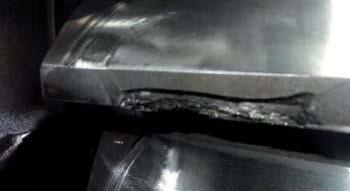
The rubber mixture for a tyre is made up of around 30 different ingredients. Rubber, soot, bulking agents, oils and chemicals are kneaded together in a large Banbury mixer as if they were ingredients for dough. Both of the large rotating shafts mesh together like two large screws, producing a homogeneous mixture. The gearing system with driving power of more than 3,000 kW, which supplies both of the rotors with the energy for kneading, is put under tremendous mechanical strain when the tough block of rubber weighing over 50 kg is replaced.
After mixing, the still-hot black rubber mass is extruded and, after a period of cooling, calendered. A special roller works a textile or wire mesh into the rubber and brings it to the desired strength. After tailoring, the individual layers of fabric of the tyre
are brought together in a tyre production machine. Finally, the individual layers are joined together in a heat press. The blank tyre is then vulcanised in heating moulds at over 150 degrees celsius for several minutes depending on its size. This gives the tyre its final shape, its pro file and the markings on the sides.
Monitored systematically – failure and downtime prevented












During trend analyses from over 60 mixers and presses which Pirelli carried out in April 2014, the lab report gave a red light twice! Red exclamation marks in the lab report concerning the gear oil from a stamp kneader as well as the hydraulic oil from a press prompted Pirelli Yanzhou to act.
The gear system, which is filled with 750 litres of CLP 320 industrial gear oil, powers the Banbury mixer‘s kneading rollers at the start of the production process. If the mixer fails, no raw materials are available to produce tyres. But almost everything was wrong with the gear oil. Even with the naked eye, large wear particles were visible. With a value of over 300, the PQ index was extremely high and warned against gear damage, because a high PQ index generally indicates severe wear processes progressing rapidly, regardless of the iron value in mg/kg. The AN (acid number) was also raised signi fi cantly, and the gear oil showed signs of being burdened and oxidised by the acids in keeping with this.
In his report, the OELCHECK diagnostic engineer recommended an inspection of the gearing and that the oil be changed immediately. The gear oil was promptly replaced by the maintenance team at the Pirelli plant in Yanzhou, but due to the favourable situation in terms of incoming orders, the Banbury mixer could not be switched off straight away. It was not until three months later during the next scheduled downtime that the gears were inspected and the damage which OELCHECK predicted was veri fi ed.
The constant overloading of the gears had taken its toll. But thanks to the early warning from the OELCHECK laboratory, the repairs could take place during regular maintenance. Sudden failure and unplanned downtime was avoided.
The mixer‘s gears were able to be protected from heavy damage, just like the hydraulic system of a steam-heated heat press which carried out vulcanisation of the rubber. Its 750 litres of hydraulic oil were dangerously contaminated with particles of dirt and moisture. Warned by the OELCHECK diagnostic engineers, the maintenance team quickly found the cause on site. A seal on the pressure cylinder was found to be faulty and quickly replaced. The hydraulic oil was saved too. After cleaning and bypass filtration by our partner Runce, it is now back in use.
6 在做什么 NEWS FROM CHINA 在做什么
ω3 ω3
Banbury-Mixer
Rubber, oils, soot and other substances prepared rubber mixture
Tooth gear failure on Banbury mixer gears due to overloading
Forming the Future – Schuler
The „plus“ set includes further examinations. The service experts use the „hydraulic plus“ set to investigate causes, for example if they discover an unusual black colouration to the oil, reduced air release properties, foaming or contamination of the system.
The questions included on the form which accompanies the samples are tailored to Schuler machines. The samples are examined at OELCHECK in Germany and China. Together with Schuler service experts, OELCHECK has calculated speci fi c limit values, e.g. regarding purity for the hydraulic oils and their commentary.
Company-wide – advantages for customers
Schuler has already been using OELCHECK lubricant analyses for many years. With the introduction of the analysis sets specially tailored for Schuler, the company now offers its customers additional advantages:
analysis coverage for Schuler machines which is consistent across the entire company


Schuler – World market leader in forming technology. The company based in Göppingen in Baden-Württemberg offers a wide range of modern production facilities, ef ficient tools and comprehensive process expertise. Schuler presses are used by the automobile industry and their suppliers, as well as in many other sectors worldwide. In 2007, Schuler took over Müller Weingarten AG and is today owned in majority by Austrian company Andritz AG.

Optimised productivity creates added value
When it comes to Schuler production facilities, the company is also the best partner for maintaining the machines throughout their entire service life. Because the machines must always be in top form. Productivity optimised by proactive maintenance creates added value and therefore means greater margins and increased return for the operators. Regardless of where the machines are used, the same high level of service is offered around the globe.
Oil analysis is a compulsory part of the programme
In order to guarantee maximum production security, Schuler uses, among other things, OELCHECK lubricant analyses. Damage caused by poor oil quality
is usually very expensive – and changing the oil in machines, often over 1,000 litres of it, entails signi fi cant costs. Regular oil analyses is the deciding factor for assessing further use of the oil. If the oil appears to be ageing at an unusually fast rate between sample intervals, Schuler can locate and remedy the causes quickly. If foreign substances or contaminants are found, their origin can be determined and filtering optimised accordingly.
The Schuler service experts have a comprehensive knowledge of the machines. OELCHECK also provides discussion and exchange of ideas on the topic of gear and hydraulic oils. You will therefore know exactly when oil analysis is necessary and be able to interpret the results according to the speci fi c system at hand.
Tailor-made analysis for Schuler
For examining hydraulic fluids, gear oils and used grease, the analysis sets „standard“ and hydraulic „plus“, custom-made by OELCHECK and Schuler, are available as of now in the Schuler replacement parts programme. They can be obtained by operators directly from Schuler almost like a replacement part. Schuler service experts also use these sets during their on-site visits.
With the „standard“ analysis set, the presses‘ gears and hydraulic oil fillings are checked during routine inspections, for example those used in car body manufacturing in the automobile industry.
consistent limit and warning values with rules for recommendations
easy processing with analysis sets as a Schuler replacement part
accurate and highly informative lab reports




quick and easy processing across the globe

access to OELCHECK analyses anywhere and at any time via the online portal www.lab.report and access to all associated advantages.
Looking at the bottom line, tailored Schuler lubricant analyses offer:







oil changes when they are actually necessary
early discovery of damages and deviations
higher production security
fewer unexpected downtimes
a signi fi cant reduction of costs
Schuler service means more productivity, ef fi ciency and operational reliability – OELCHECK lubricant analyses contribute signi fi cantly to this.
www.schulergroup.com
7 PARTNER FORUM
Typical of Schuler: A tension rod design servo press with 11,000 kN of pressing force. Hydraulic oil filling quantity > 5,000 L.
Our mixed vehicle fl eet includes large lorries and transporters but also a few cars. We carry out oil changes in our own workshop. Although we do not neglect scheduled maintenance, we always have problems with oil consumption. Several times when the oil level warning light lit up, it was dangerously low. Is our workshop working incorrectly? And why do modern engines even consume oil?
Previously, the oil level was checked weekly using a dipstick. Nowadays we are spoiled by modern long-life engine oils with their extremely long service lifes or dynamic oil change intervals which the on-board computer indicates. Many motorists do not even check their oil levels anymore. This means the burden on engine oils is growing constantly, the oil volumes are shrinking and service lives have increased. Synthetic engine oils are high-performing and long-lasting, but they are never protected against oil consumption. If the oil level in the engine decreases, it does not necessarily have anything to do with oil consumption. Oil loss is also a possibility. We have compiled a list of the most important causes for consumption and loss of engine oil.
Increased oil consumption
Usage conditions and driving behaviour
Full throttle, use which is predominantly of a „stop and go“ nature, or demanding hill ascents cause temperatures and therefore loss due to evaporation to rise.
Oil level in the engine which is too high
For quantities of oil which are too great or if there is too much fuel in the oil due to constant short trips, the crankshaft will dip into the oil sump. But if too much oil is used, increased splashing and therefore more fl exing work is the result. As a result, the oil temperature increases.
Incorrect oil quality
It is not without good reason that automobile manufacturers include the ACEA or API speci fi cations














of the oils in their operating manuals, or freely share their names. If the speci fi c requirements are not adhered to, e.g. with regard to loss due to evaporation, there is a risk of increased oil consumption. If engine oils are used which are not freely shared, the limit values for exhaust emissions can often not be complied with. Engines of generations Euro V and VI with their complicated exhaust gas treatment systems are particularly affected. Their function is reduced and there is a threat of damage and signi fi cantly shorter service lives.
Unadjusted oil change intervals






If oil analyses are not carried out, the oil change intervals stated by the manufacturer or those indicated by the on-board computer should generally be adhered to. In extreme usage conditions, an analysis of the used oil can show that the intervals should be reduced.
Faults in the injection system or valve control
Moving parts of an injection system are partly lubricated via the engine‘s oil circuit. If internal leaks occur, oil can come into contact with fuel in the engine‘s combustion chamber. Even if the exhaust valves open while there is still oil on the wall of the cylinder, partly unburned oil can escape through the exhaust system. This often leads to an increased burden on the exhaust treatment systems. If the number of soot particles in the oil increases due to faults in the injection system or as a result of incorrect valve control, the additives will no longer be able to keep all of the particles in check. The anti-redeposition power of the engine oil decreases, and the danger of deposits increases. The viscosity of the engine oil will also increase, thickening and losing volume. Fail-safe lubrication can no longer be guaranteed, particularly during a cold-start. Fuel consumption rises simultaneously.
Consumption of dirt-carrying additives
All types of engine oil take on a darker colouring after a short while. Their detergent/dispersant additives prevent the formation of sludge and lacquer-like deposits which develop in the form of soot, the products of acid reactions, nitrous gases, unburned fuel residues and water. Dirt is broken down into small particles, suspended in an
OelChecker – an OELCHECK GmbH magazine


















































Kerschelweg 28 - 83098 Brannenburg · Germany
info@oelcheck.de · www.oelcheck.com
All rights reserved Reproduction is only permitted after receiving our approval.
Concept and text: Astrid Hackländer, Marketing & PR, 4600 Thalheim, Austria, www.astridhacklaender.com
Layout and design: Agentur Segel Setzen, Petra Bots, www.segel-setzen.com
Photos: OELCHECK GmbH · Hansa-Flex · Schuler Presses · fotolia


emulsion and transported to the filter. In this way, the oil ensures the engine is clean and ensures optimal combustion. But there will eventually come a point when the supply of these additives runs out. The anti-redeposition power of the engine oil depletes, and the danger of deposits increases. Fail-safe lubrication can no longer be guaranteed, particularly during a cold-start. Fuel consumption simultaneously rises.
Insuf fi cient piston ring sealing
If worn or broken piston rings do not seal the cylinder piston suf fi ciently, or if deposits have formed around the oil scraper ring, oil consumption can increase, since the oil which is not scraped off the piston wall and into the oil sump will burn.
Oil shrinkage due to loss


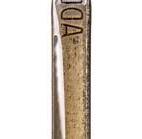

Extremely increased oil pressure
If an oil leakage becomes visible on multiple seals and connection points in the oil circuit at the same time, the cause may be oil pressure which has increased severely. This is not indicated by a warning light and can be caused by deposits in pipes, filters, one-way valves and crankcase ventilation, or by a viscosity that is incorrect or too high.
Seal failure
Modern sealing materials work with the highest precision. If leaks do occur, however, it is often not a material fault, but some other kind of fault. Even a small foreign body, e.g. particles of paint, rust, or the remains of a sealant can interfere with the seal and prevent it from functioning correctly. The same applies to damaged component surfaces. If they are not fl at, or are scratched or partially corroded, even the best seal cannot cancel out these defects. If the correct functioning of the seal is interfered with, coolant or engine oil could escape, depending on its position, or a component could become damaged.
Caution should be taken when using liquid or permanently elastic sealants. They can generally only be used on areas that they were designed for. Leaks can pose a threat if sealants have not been tested on the respective oil type, or if sealants are to replace common solid seals.
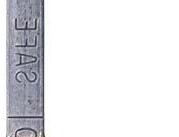

IMPRINT 8 SPRING 2015
FAQ If you have questions about tribology or lubricant analysis, OELCHECK can answer them. Send us your questions by e-mail (info@oelcheck.de) or by fax (+49 8034-9047-47). mi wa lo An even cons OELCHE Previous with t dyna on m oil burde




















































